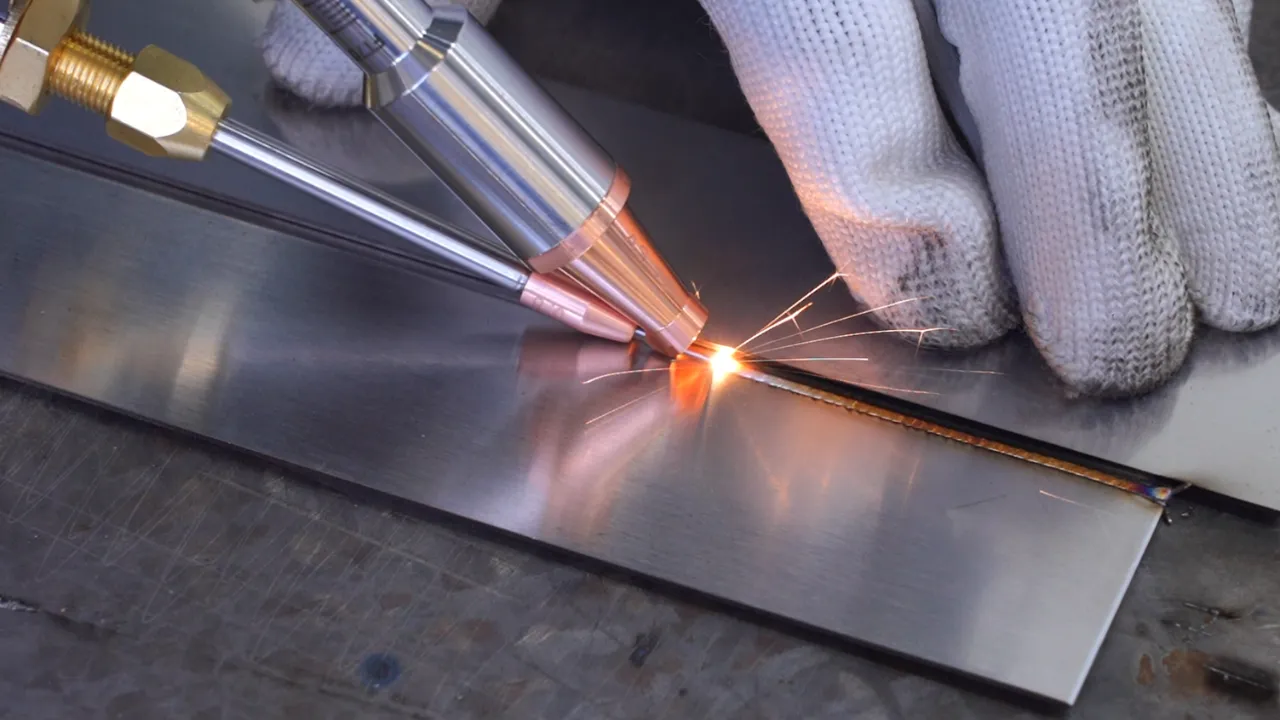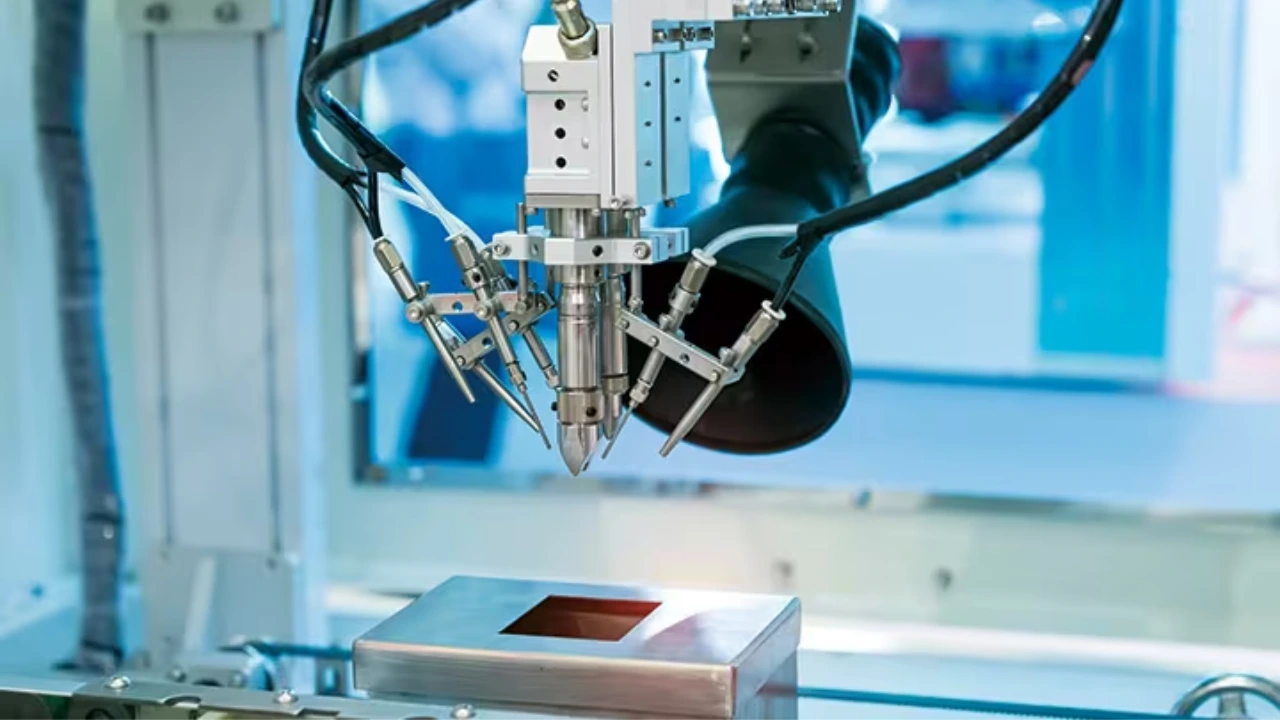Working with metal is both exciting and empowering. As the sparks fly and the heat turns up, welders can transform some of the world’s strongest materials into the shapes and products they envision. This skill requires work and practice to acquire, and it’s best learned with the assistance and guidance of industry professionals.
Learning the ropes of a new trade can be time-consuming. You need to become familiar with the entire working process from start to finish and master each level before moving on. This attention to detail is what makes a great welder and a more versatile potential employee.
Types Of Welding
There are four main types of welding. MIG – Gas Metal Arc Welding (GMAW), TIG – Gas Tungsten Arc Welding (GTAW), Stick – Shielded Metal Arc Welding (SMAW), and Flux-cored – Flux-cored Arc Welding (FCAW). We dive deeper into each type of welding here.

#1. MIG Welding.
MIG welding is one of the easier types of welding for beginners to learn. MIG welding is used in the auto industry to repair vehicle exhaust and in the construction of houses and buildings. This is a type of arc welding that uses a continuous wire called an electrode. You also use a shielding gas that flows through the welding gun and protects against contamination.
MIG welding is two different types of welding. The first use bare wire and the second uses flux core. Bare wire MIG welding can be used to join thin pieces of metal together. Flux core MIG welding can be used outdoors as it does not require a flow meter or gas supply. MIG welding is usually the welding of choice for DIY and amateur welders who don’t have the cash to spend on expensive equipment.
#2. TIG Welding.

Like MIG, TIG welding also uses arcs, but it is also one of the more difficult welding techniques to learn. TIG welding uses a tungsten electrode. Tungsten is one of the hardest metal materials. It does not dissolve or burn off.
Tig welding can be done by a process known as fusion, which may or may not use a filler metal. TIG also uses an external gas supply such as argon or helium.
Two hands are required for TIG welding. One hand guides the rod while the other holds a TIG torch. This torch produces the heat and arc used to weld the most common metals including aluminum, steel, nickel alloys, copper alloys, cobalt, and titanium.
TIG welders can be used to weld steel, stainless steel, Chromoly, aluminum, nickel alloys, magnesium, copper, brass, bronze, and even gold. TIG is a useful welding process for bike frames, lawnmowers, door handles, fenders, and more.
The aerospace and automotive industries use TIG welding as do other industrial markets. This is also a great type of welding for Iowa as it can be very useful for farmers to weld wagon frames, fenders, and other vital equipment.
#3. Stick welding Or SMAW.

Want to take your welding to go? A major benefit of stick welding is that it is portable. Stick welding is used in construction, maintenance and repair, underwater pipelines, and industrial manufacturing. For this type of welding, use shielded metal arc welding, better known as stick welding.
Stick welding, also known as arc welding, does it the old-fashioned way. Stick welding is a bit more difficult to master than MIG welding, but you can buy stick welding equipment for very little money if you want to try it at home. Stick welding uses a stick electrode welding rod.
They use a consumable and protected electrode or stick. The stick softens and bonds metals by heating with an electric arc between a covered metal electrode and the base metal workpiece. As the stick melts, its protective cover also melts, shielding the welding area from oxygen and other gases that may be in the air.
#4. Flux-cored arc welding (FCAW).

This type of welding is like MIG welding. MIG welders can often double duty as FCAW welders as well. Just like MIG welding, a wire that serves as the electrode and filler metal is passed through your rod. This is where things start to differ. For FCAW, the wire has a flux core that forms a gas shield around the weld. This eliminates the need for an external gas supply.
FCAW is better suited for thicker, heavier metals as it is a high-temperature type of weld. Because of this, it is often used for repairs on heavy equipment. It’s an efficient process that doesn’t generate a lot of waste. Since no external gas is required, it is also cost-effective. There will be some slag left over, however, and it needs a bit of cleaning up to make a nicely finished weld.
#5. Plasma arc welding.

Plasma arc welding is a precision technique and is commonly used in aerospace applications where the metal thickness is 0.015 inches. An example of such an application would be an engine blade or air seal. Plasma arc welding is technically very similar to TIG welding, but the electrode is recessed and the ionizing gases in the arc are used to generate heat.
The usual gas combination is argon as the plasma gas, with argon plus 2 to 5% hydrogen as the shielding gas. Helium can be used for a plasma gas, but as it is hotter this reduces the amperage of the nozzle.
Want to know more about Plasma Welding? Check out this article.
#6. Laser Beam welding.

Laser Beam welding is a type of welding that can be used on metals or thermoplastics. As the name suggests, a laser is used as a heat source to create the welds. It can be used on carbon steels, stainless steels, HSLA steels, titanium, and aluminum. It can be easily automated with robotics and is therefore widely used in manufacturing, for example in the automotive industry.
#7. Electron beam Welding.

This is a type of welding in which a high-speed electron beam uses kinetic energy to generate heat and weld two materials together. This is a very demanding form of welding that is carried out mechanically, mostly in a vacuum.
#8. Gas Welding.

Gas welding is only rarely used and has been largely superseded by TIG welding. Gas welders require oxygen and acetylene and are very portable. They are still sometimes used to weld parts of car exhaust back together.
#9. Atomic hydrogen welding.
Atomic hydrogen welding is a form of extremely high-heat welding formerly known as Atomic Arc Welding. In this type of welding, two tungsten electrodes are shielded with hydrogen gas.
It can reach temperatures more than that of an acetylene torch and can be conducted with or without filler metal. This is an older form of welding that has been replaced by MIG welding in recent years.
#10. Electroslag.
This is an advanced welding process used to join the thin edge of two metal plates together vertically. Instead of the welding being made on the outside of a joint, it takes place between the edges of the two panels.
A copper electrode wire is passed through a consumable metal guide tube that serves as the filler metal. When current is applied, the arc is created and a weld begins at the bottom of the seam and is slowly moved up, creating the weld instead of the seam as it progresses. This is an automated process and is done by machine.
What Type Of Weld Is The Strongest?
TIG welding is often considered the strongest weld since it produces extreme heat, and the slow cooling rate results in high tensile strength and ductility. MIG is also an excellent candidate for the strongest type of weld because it can create a strong joint.
However, this question is actually quite tricky as the strength of a weld depends on the material it’s used on. Three other criteria to look at that can determine the strength of a weld are the weld length, size, and filler.
Thus, the answer to the question ‘What is the strongest type of weld?’ isn’t clear cut and depends on the welder’s skill and the material used.
FAQs
What are the four main types of welding?
1. Gas Metal Arc Welding (GMAW/MIG).
2. Gas Tungsten Arc Welding (GTAW/TIG).
3. Shielded Metal Arc Welding (SMAW).
4. Flux Cored Arc Welding (FCAW).
What is TIG and MIG welding?
MIG welding uses a continuously-fed electrode wire and shielding gas via a hand-held torch. TIG welding uses a non-consumable tungsten electrode with a shielding gas fed through a supply line and a separate, hand held filler rod that is manually fed into the weld pool.
What is the strongest type of welding?
TIG welding is often considered the strongest weld since it produces extreme heat, and the slow cooling rate results in high tensile strength and ductility. MIG is also an excellent candidate for the strongest type of weld because it can create a strong joint.
What are the three major types of welding?
The three most common welding types are – Arc, MIG and TIG welding. Let’s take a closer look and discuss some similarities and differences between them. Arc welding also referred to as stick welding is the oldest of the three and probably the most cost efficient.
What type of welding pays the most?
1. Rig Welder. Annual Salary: $52,000 – $207,000.
2. Underwater Welder. Annual Salary: $38,000 – $147,000.
3. Nuclear Welder. Annual Salary: $22,000 – $143,500.
4. Industrial Pipeline Welder. Annual Salary: $23,500 – $133,500.
5. Military Support Welders. Annual Salary: $37,000 – $160,000.
What is the easiest welding to learn?
MIG (metal inert gas) welding is an excellent choice for beginning welders. This easy-to-handle machine is usually spool-fed to create professional-looking joints on both thick and thin metals. MIG welding requires separate shielding gas but doesn’t require chipping and cleaning slag as the stick welding process can.